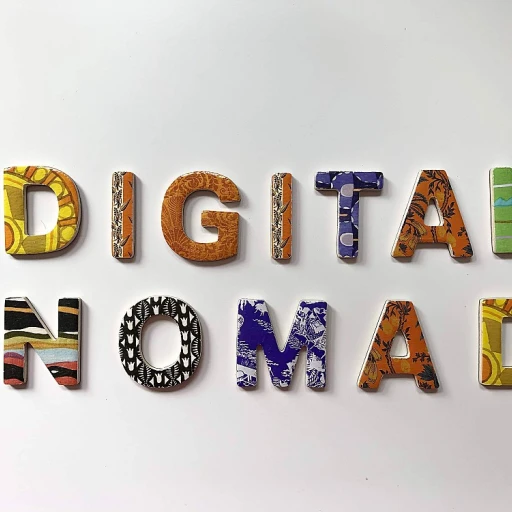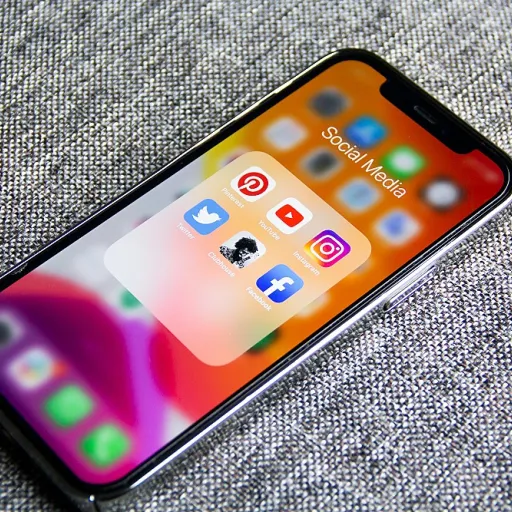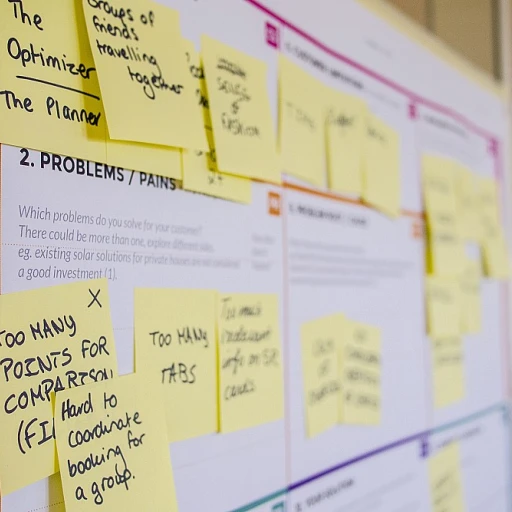
Understanding the link between AI and conversion optimization
AI’s Role in Modern Conversion Optimization
Artificial intelligence is rapidly changing how businesses approach conversion optimization in digital marketing. Traditionally, marketers relied on manual user testing, A/B testing, and intuition to improve conversion rates. Now, AI-driven tools analyze vast amounts of data, uncovering patterns in user behavior that were previously difficult to detect. This shift enables a more data driven approach to increasing conversion rates and optimizing the customer journey.
- Data Analysis: AI processes high volumes of website and mobile data, identifying what drives visitors to complete actions like adding items to a cart or signing up for email lists.
- User Segmentation: By grouping users based on behavior, AI helps marketers target specific segments with tailored content and offers, improving lead generation and reducing lost sales.
- Optimization Strategy: AI supports the development of optimization strategies that adapt in real time, responding to changes in user behavior and market trends.
Conversion rate optimization (CRO) is no longer just about tweaking landing pages or testing button colors. AI integrates with social proof signals, exit intent triggers, and even social media data to refine the optimization process. This holistic approach leads to higher conversion rates and a better user experience across all digital touchpoints.
For those interested in how social media impacts CRO, you can explore more about the advantages of social media optimization and its role in driving conversions.
As AI continues to evolve, its influence on conversion optimization will only grow, impacting everything from content personalization to predictive analytics. Understanding this connection is essential for anyone looking to implement effective optimization strategies and increase conversion rates in today’s competitive landscape.
AI-powered user behavior analysis
Unlocking User Insights with AI-Driven Analysis
Understanding how visitors interact with your website is at the core of effective conversion optimization. Artificial intelligence is revolutionizing this process by providing deeper, data-driven insights into user behavior, which is essential for increasing conversion rates and shaping a successful optimization strategy.
- Behavioral Pattern Recognition: AI tools can analyze vast amounts of user data, tracking how customers move through the customer journey, from landing pages to cart abandonment. This helps identify high-exit intent points and lost sales opportunities, allowing marketers to implement targeted improvements.
- Advanced User Testing: Traditional user testing can be time-consuming and limited in scope. AI-powered solutions automate the analysis of user interactions, such as clicks, scrolls, and navigation paths, across both mobile and desktop platforms. This enables continuous optimization CRO efforts and a more refined understanding of what drives conversion rates.
- Segmentation and Target Group Analysis: AI can segment visitors into specific target groups based on behavior, demographics, and engagement patterns. This segmentation supports more personalized marketing and content strategies, ultimately increasing conversion and lead generation.
- Real-Time Data for Optimization: With AI, marketers can access real-time data to quickly test and adapt content, layout, and calls-to-action. This data-driven approach supports ongoing rate optimization and ensures that changes are based on actual user behavior, not assumptions.
By leveraging AI for user behavior analysis, digital marketing teams can optimize the user experience, reduce friction in the customer journey, and boost conversion rates. For more in-depth strategies on enhancing user interaction with AI in SEO, explore this guide on AI-driven user engagement.
Personalization strategies with AI
Personalization at Scale: AI’s Role in Tailoring Experiences
Personalization has become a cornerstone of modern conversion optimization. Artificial intelligence enables marketers to deliver tailored experiences to each user, driving higher conversion rates and improving the overall customer journey. By leveraging AI, websites can analyze vast amounts of user data, such as browsing behavior, device type (mobile or desktop), and previous interactions, to create highly relevant content and offers.
- Dynamic Content: AI algorithms can automatically adjust website content based on the visitor’s preferences, location, and even the time of day. This data-driven approach ensures that users see the most relevant products or messages, increasing the likelihood of conversion.
- Email and Social Media Personalization: AI tools can segment audiences for email campaigns and social media ads, optimizing messaging for each target group. This not only boosts engagement but also helps in lead generation and reduces lost sales.
- Product Recommendations: By analyzing user behavior and purchase history, AI can suggest products that are more likely to be added to the cart, enhancing the shopping experience and supporting rate optimization.
Personalization strategies powered by AI also extend to user testing and optimization CRO. For example, AI can run multivariate tests to determine which combinations of content, layout, and calls-to-action perform best for different segments. This continuous testing and optimization process helps increase conversion rates and supports a data-driven optimization strategy.
Social proof elements, such as reviews or testimonials, can be dynamically displayed to users who are most likely to be influenced by them, based on predictive analytics. AI can even detect exit intent and trigger personalized offers or messages to retain visitors who are about to leave, reducing lost sales and improving conversion optimization.
For businesses looking to implement high-impact personalization strategies, leveraging free resources can be a great starting point. For example, unlocking the potential of free dental marketing videos demonstrates how targeted content can engage specific audiences and drive conversions in digital marketing campaigns.
Automated content optimization for better conversions
Smarter Content for Higher Conversion Rates
Artificial intelligence is rapidly changing how digital marketing teams approach content optimization for conversion rate optimization (CRO). By leveraging AI, businesses can make their website content more relevant and persuasive, directly impacting conversion rates and reducing lost sales. The process is increasingly data driven, focusing on user behavior, testing, and continuous improvement.
- Dynamic Content Creation: AI tools analyze user data, such as browsing patterns and cart activity, to automatically generate or recommend content that resonates with each target group. This can mean adjusting headlines, calls-to-action, or even product descriptions in real time, based on user behavior and preferences.
- Automated A/B and Multivariate Testing: AI-powered platforms streamline the testing process by running multiple content variations simultaneously. They quickly identify which combinations yield the highest conversion rates, allowing marketers to implement winning strategies faster than manual testing would allow.
- Personalized User Experience: AI enables websites to deliver tailored experiences for each visitor. For example, returning users might see different offers or social proof elements, such as reviews or testimonials, compared to first-time visitors. This level of personalization can significantly increase conversion and lead generation.
- Exit Intent Optimization: AI can detect when users are about to leave a website and trigger targeted messages or offers, such as email sign-ups or discounts. This helps recover potentially lost sales and keeps visitors engaged in the customer journey.
- Content Optimization for Mobile: With more users browsing on mobile devices, AI ensures that content is optimized for smaller screens, improving user experience and conversion rates across all platforms.
Implementing these AI-driven strategies not only improves conversion optimization but also supports a broader optimization strategy. By continuously analyzing data and user testing results, marketers can adapt their content to meet evolving customer needs and behaviors. This approach helps increase conversion rates and supports overall digital marketing goals, from social media engagement to lead generation.
Predictive analytics and forecasting with AI
Turning Data into Actionable Insights
Predictive analytics is changing the way digital marketing teams approach conversion optimization. By leveraging AI, businesses can analyze large volumes of user data to forecast trends, anticipate customer needs, and identify high-value opportunities for rate optimization. This data-driven approach helps marketers move beyond guesswork, making it possible to implement strategies that increase conversion rates and reduce lost sales.- Customer journey mapping: AI models can track and predict how visitors move through a website, highlighting points where users drop off or abandon their cart. This insight allows for targeted optimization strategies, such as improving exit intent pop-ups or refining the checkout process to boost conversions.
- Lead generation and segmentation: Predictive analytics can identify which segments of your target group are most likely to convert. This enables more effective testing and personalization, ensuring that content and offers are tailored to the right users at the right time.
- Forecasting campaign performance: AI tools can analyze historical data from email, social media, and on-site behavior to predict which marketing tactics will yield the highest conversion rates. This helps teams allocate resources more efficiently and prioritize high-impact CRO initiatives.
Enhancing User Experience with Proactive Optimization
AI-powered forecasting doesn’t just help with planning; it also enables real-time optimization. For example, if predictive models detect a sudden drop in conversion rate on mobile devices, automated systems can trigger user testing or content adjustments to address the issue before it affects overall performance. This proactive approach ensures that the website remains optimized for all users, regardless of device or entry point.| AI Application | Optimization Benefit |
|---|---|
| Predictive lead scoring | Focuses marketing efforts on high-potential customers |
| Churn prediction | Identifies at-risk users, enabling retention strategies |
| Dynamic content adjustment | Improves user experience and increases conversion rates |
Challenges and ethical considerations in AI-driven conversion optimization
Addressing Bias and Fairness in AI Algorithms
When implementing artificial intelligence in conversion optimization, one of the most pressing concerns is algorithmic bias. AI models learn from historical data, which can sometimes reflect existing prejudices or unbalanced user behavior patterns. If not carefully monitored, this can lead to unfair targeting or exclusion of certain user segments, impacting the overall customer journey and potentially reducing conversion rates. Regular user testing and data audits are essential to ensure that optimization strategies remain inclusive and effective for the entire target group.
Transparency and Data Privacy
AI-driven optimization relies heavily on user data, from website interactions to email engagement and even social media activity. While this data-driven approach can increase conversion rates and improve the user experience, it also raises concerns about privacy and consent. Marketers must be transparent about data collection practices and comply with regulations like GDPR. Ensuring users understand how their data is used for conversion rate optimization builds trust and supports long-term lead generation efforts.
Balancing Automation and Human Oversight
Automated content optimization and predictive analytics can streamline CRO processes, but over-reliance on AI may lead to missed nuances in user behavior. Human oversight remains critical for interpreting test results, refining optimization strategies, and addressing unexpected outcomes, such as lost sales or high cart abandonment rates. Combining AI insights with expert analysis helps maintain a high standard of digital marketing and supports continuous rate optimization.
Ethical Use of Personalization
Personalization powered by AI can significantly increase conversion by tailoring content and offers to individual visitors. However, excessive or intrusive personalization may feel invasive, especially on mobile platforms or during exit intent pop-ups. Striking the right balance between relevance and privacy is key to maintaining a positive user experience and avoiding negative perceptions that could harm conversion optimization efforts.
- Regularly review AI-driven content and recommendations for unintended bias
- Implement clear consent mechanisms for data collection and user tracking
- Combine automated testing with manual review to ensure accuracy and fairness
- Monitor user feedback to identify areas where personalization may be too aggressive
By proactively addressing these challenges, marketers can harness the full potential of AI for CRO while maintaining ethical standards and building trust with their audience. This approach not only supports higher conversion rates but also strengthens the overall optimization strategy for long-term success.













